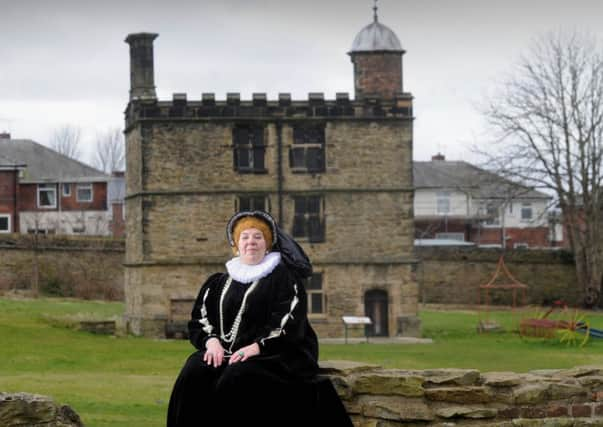Sheffield holds missing link to Wolf Hall story


One particularly grim piece of the puzzle involving an often overlooked Yorkshire landmark was missing from the puzzle however, regarding how a stay in Sheffield contributed to the demise of Cardinal Wolsey.
The successful BBC series might have portrayed his failure to secure a divorce for King Henry VIII as the catalyst of his downfall, but it was during the cardinal’s imprisonment at the city’s Tudor Manor Lodge that he caught the “nasty gastric bug” which led to his death.
Advertisement
Hide AdAdvertisement
Hide AdAccording to local legend, he was holed up too near to the toilet during the fortnight-long stay under the watchful eye of the Earl of Shrewsbury, and what are thought to be the remains of the lavatory still stand today.


Inspired by the success of Wolf Hall, the site’s managers Green Estates are stepping up efforts to celebrate this little-known claim to fame.
“We often feel quite aggrieved here that Manor Lodge doesn’t seem to be mentioned all that much in the stories of the Cardinal,” visitor manager Jon Bradley told The Yorkshire Post.
“It would’ve been a very long journey for him, and as a prisoner of the King it was important that there was somewhere safe for him to stay, and it was a secure manor house out of the way.
Advertisement
Hide AdAdvertisement
Hide Ad“At the time Manor Lodge owned by the Earl of Shrewsbury, and this was a way for him to show that he was very much on the side of Henry. In fact it was quite a coup to have such a high-profile prisoner.”
Cardinal Wolsey died in Leicestershire just three days after departing from Sheffield, and his tragic end set the scene for Wolf Hall, an adaptation of Hilary Mantel’s acclaimed novel and the most successful drama the BBC has made for a decade.
The National Trust has predicted that the programme’s popularity will boost tourism at the castles and cathedrals of southern England, such as Somerset’s Montacute House, which were used as filming locations in the series.
Green Estates is putting together a programme of summer events championing its northern connection designed to attract this new wave of Tudor-loving tourist.
Advertisement
Hide AdAdvertisement
Hide Ad“I think it’s wonderful that Wolf Hall has shown modern audiences what it was like to live in that time, the importance of positions in court and political issues,” said Mr Bradley.
“For me one of the most powerful bits was the beheading of Anne Boylen. You are there on the edge of your seat - this is what is means and this is what it feels like.”
And Green Estates is also keen to highlight the fact that he was not the only famous name in history to have been incarcerated in the manor.
In 1569, Mary Queen of Scots was handed over to the custody of the 6th Earl of Shrewsbury and his wife, Bess of Hardwick, following her defeat at the battle of Langside.
Advertisement
Hide AdAdvertisement
Hide AdShe spent 14 years in captivity in the Sheffield area, much of which was spent at Manor castle and lodge, with breaks at Chatsworth and Buxton. Her ghost is said by some to haunt the Turret House building.
Despite being nestled in the heart of one of Sheffield’s most deprived areas, Manor, the ruins of this important Tudor site, including Turret House, are open for visitors to explore.
History officer Andy Messer added: “Not everyone realises that Sheffield has an important Tudor history and there are still a few fantastic remnants visible today. At Sheffield Manor Lodge you can see it come to life.”